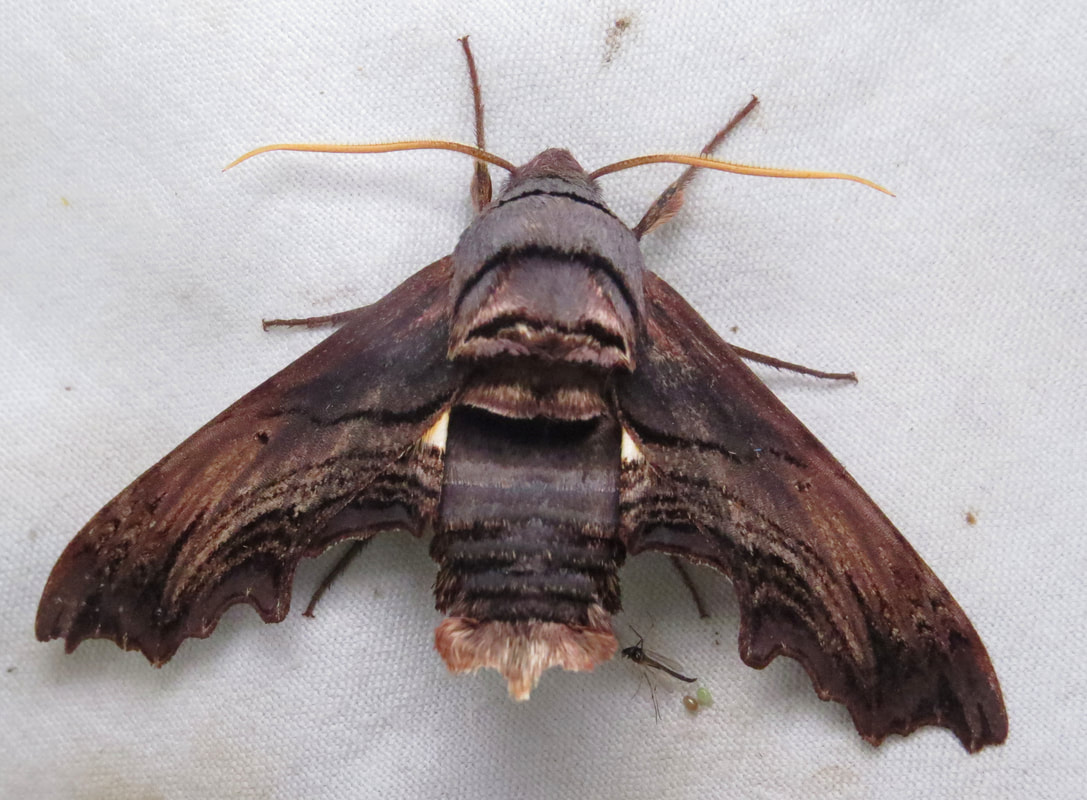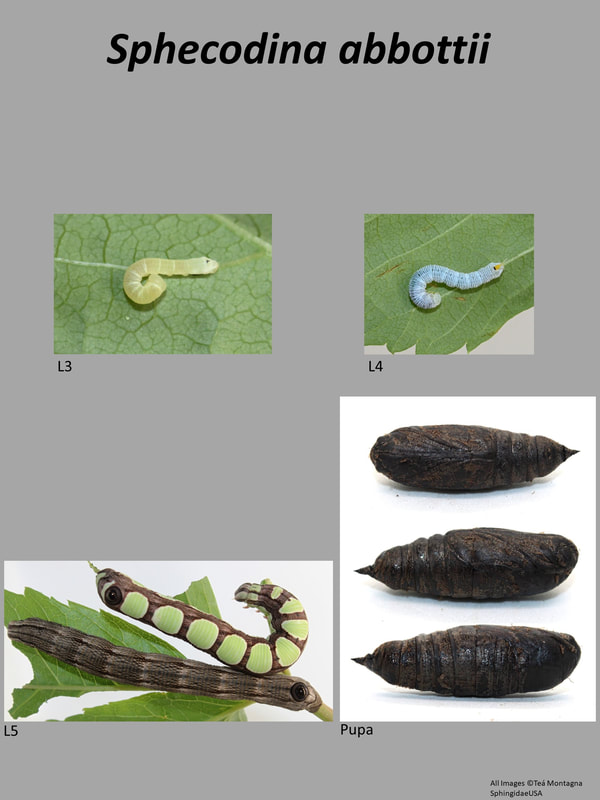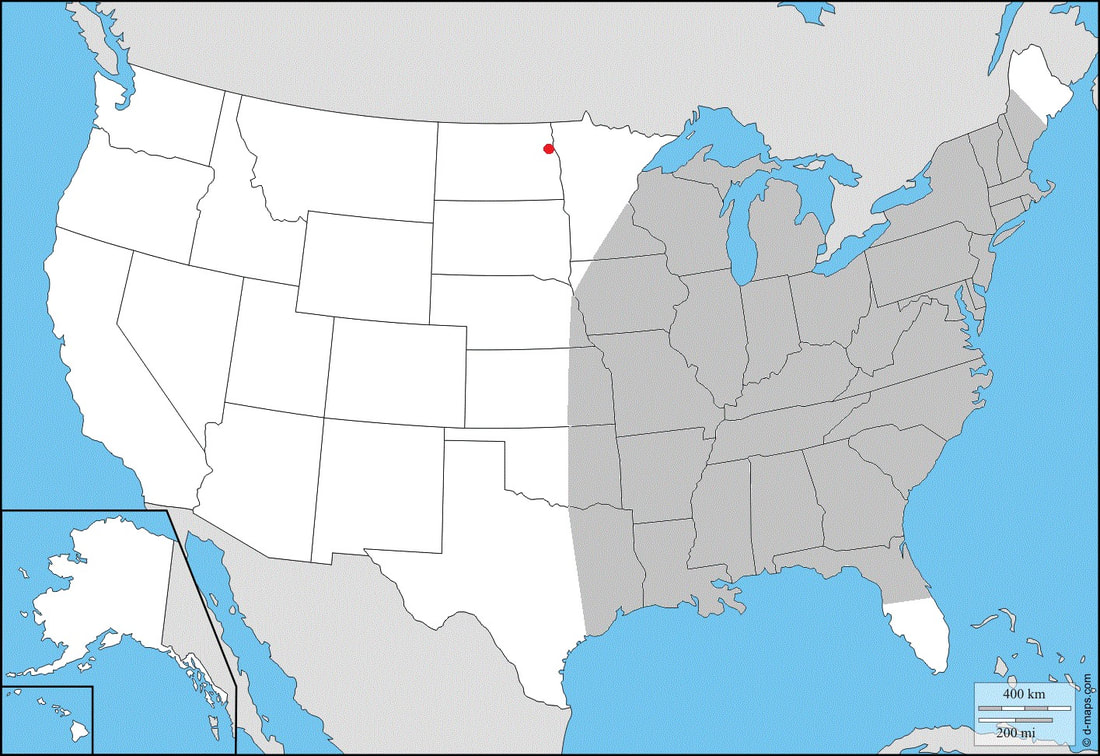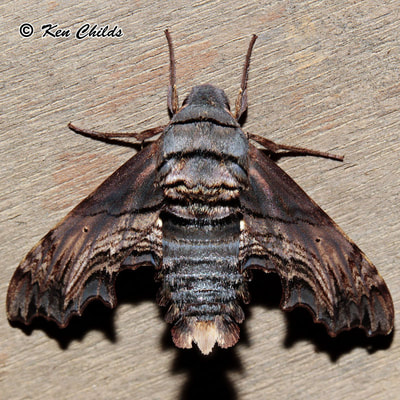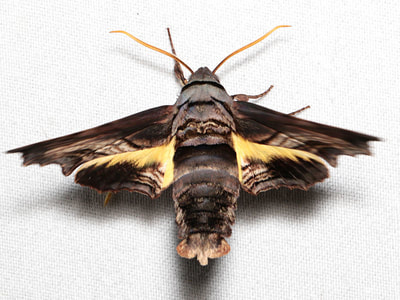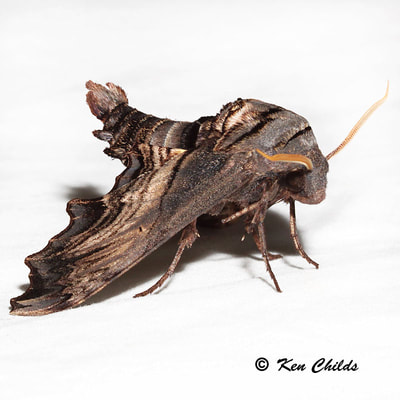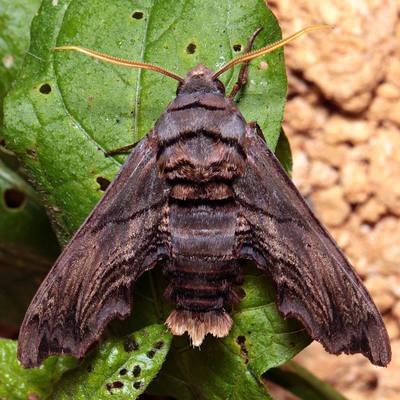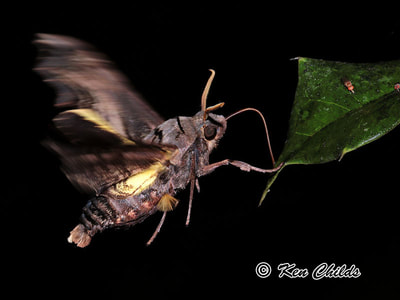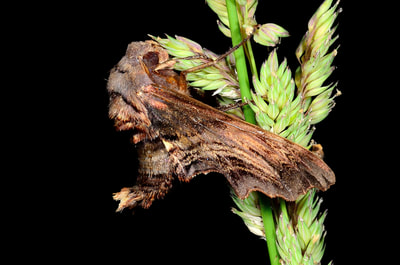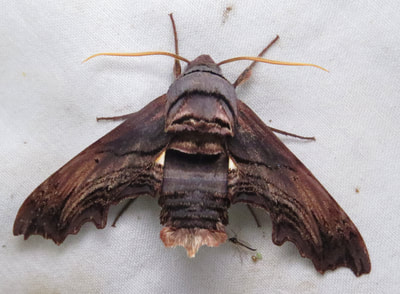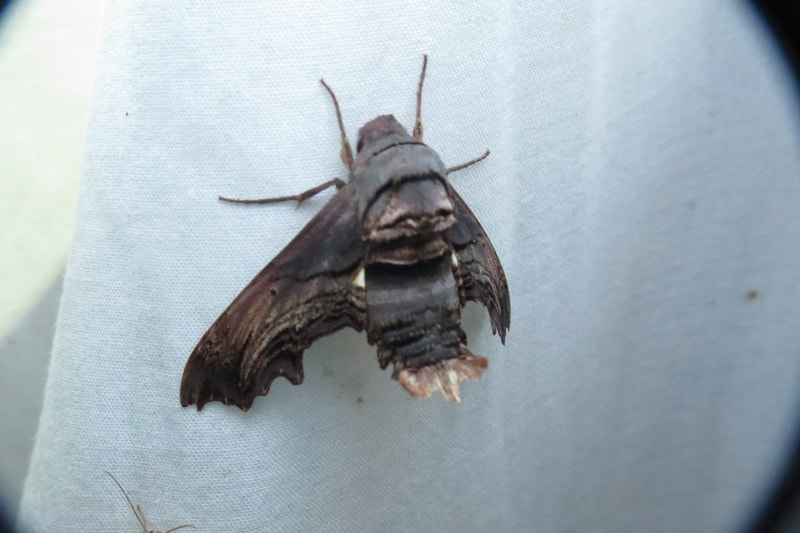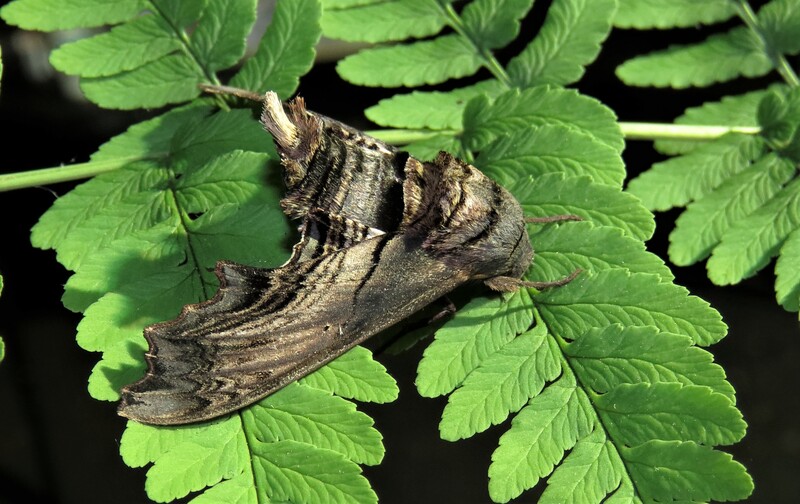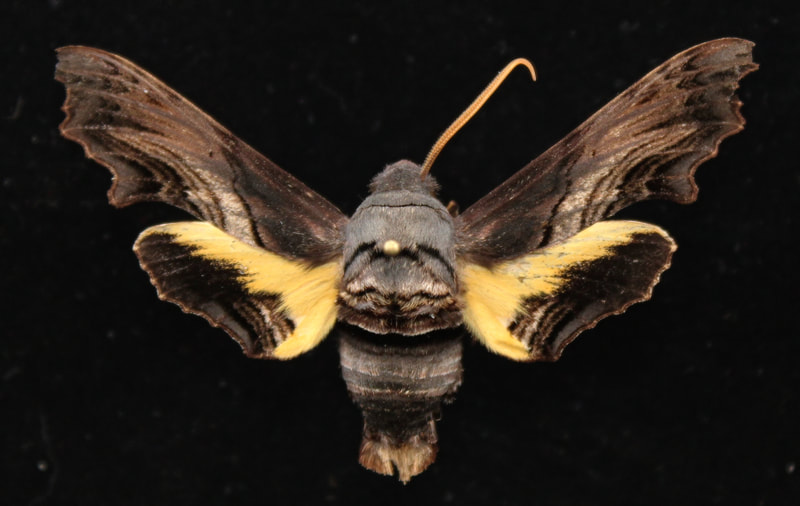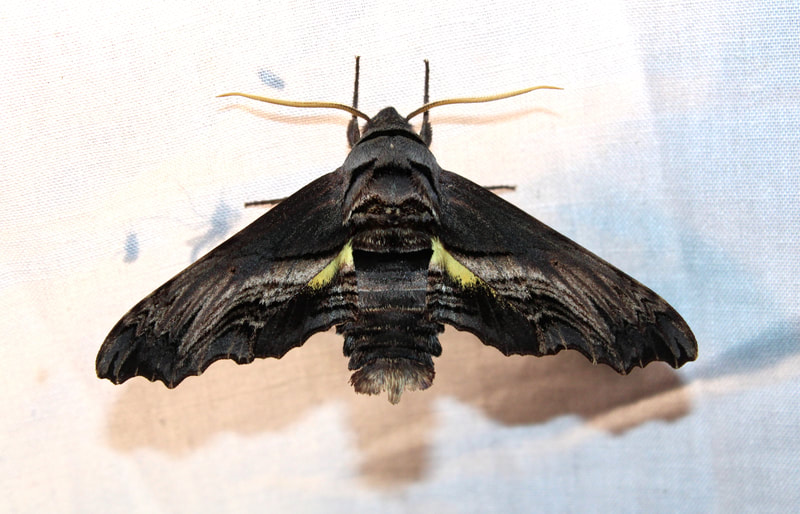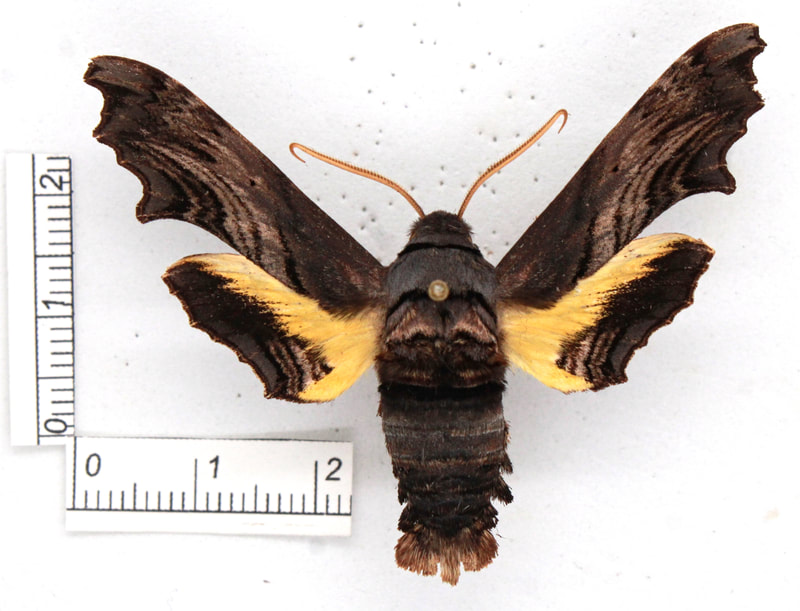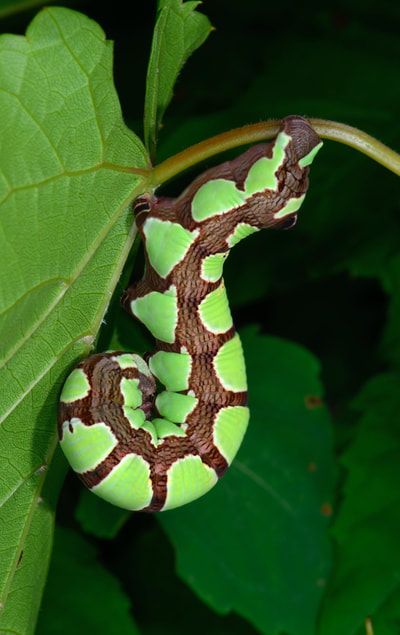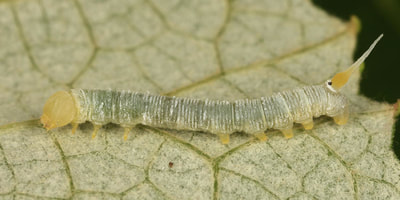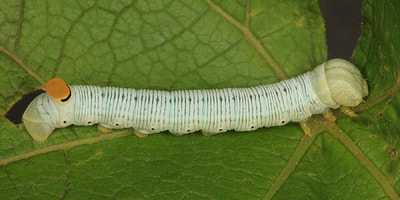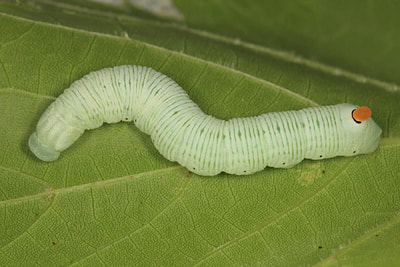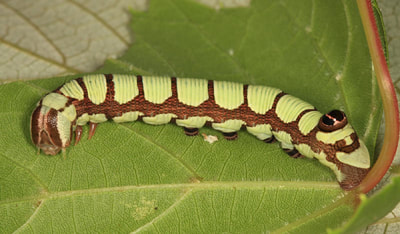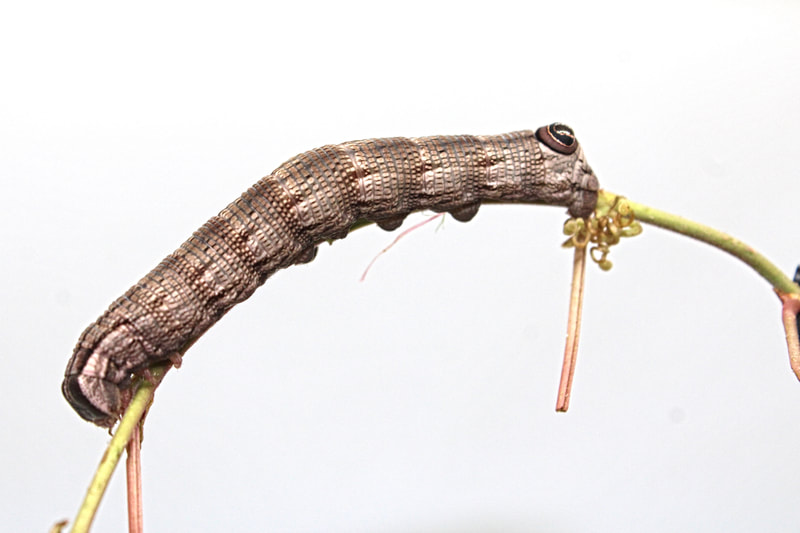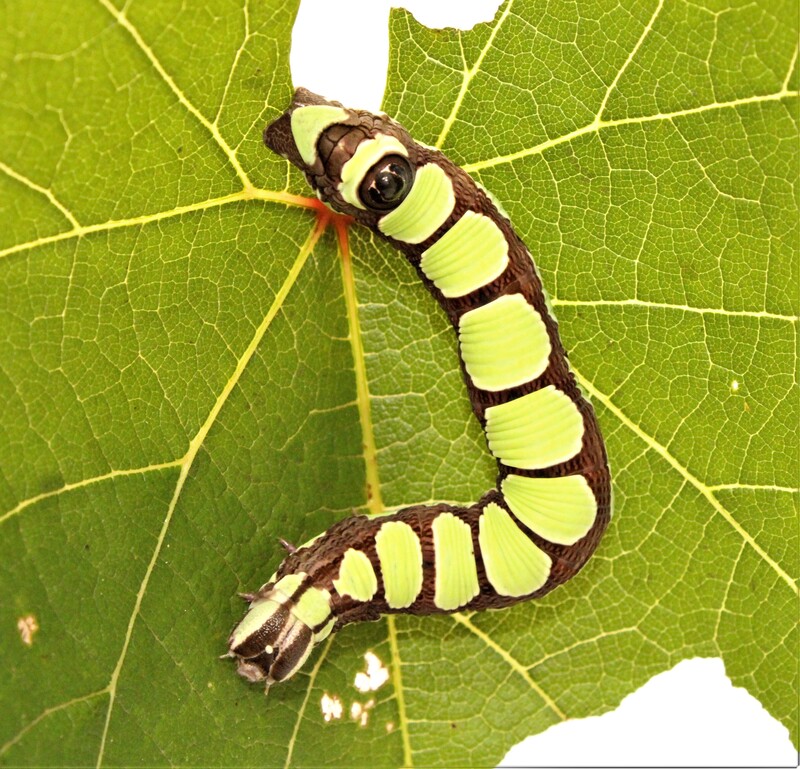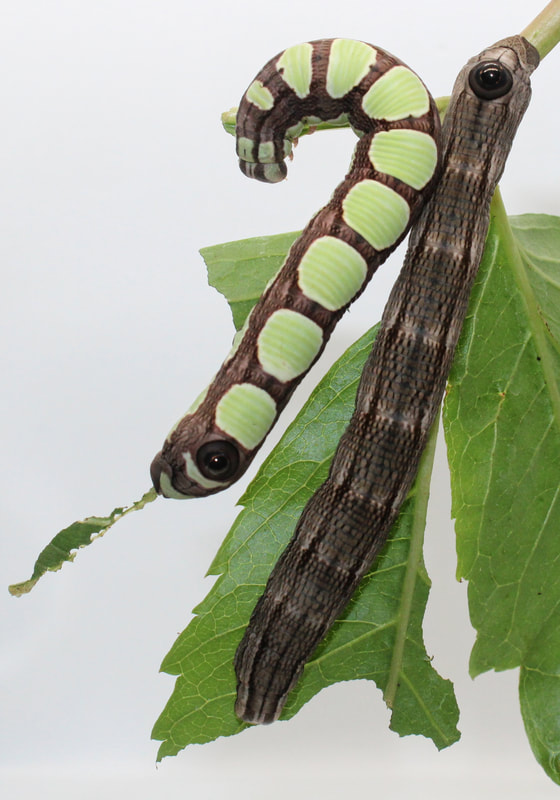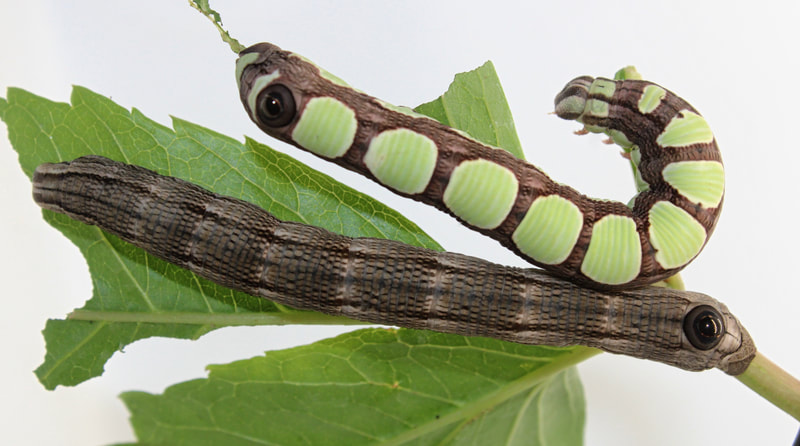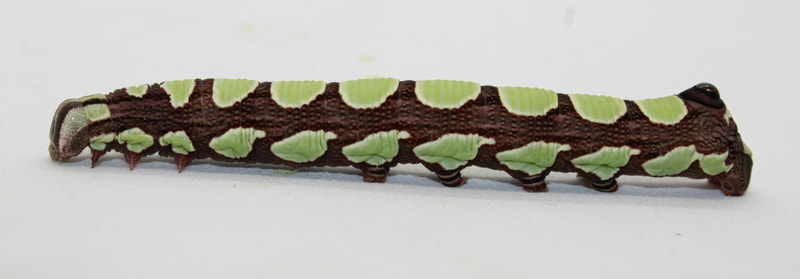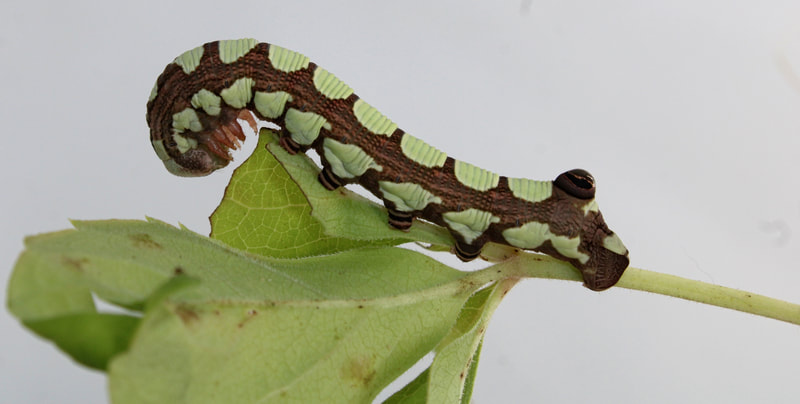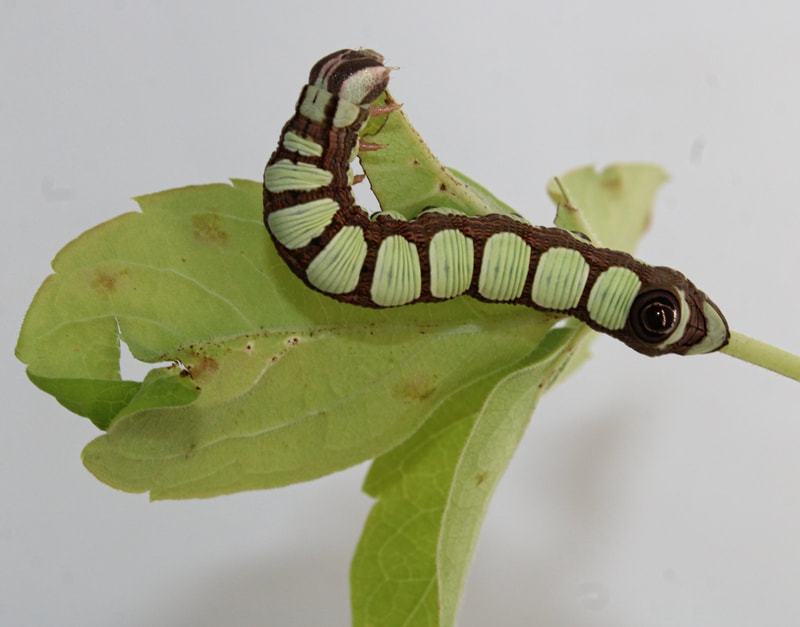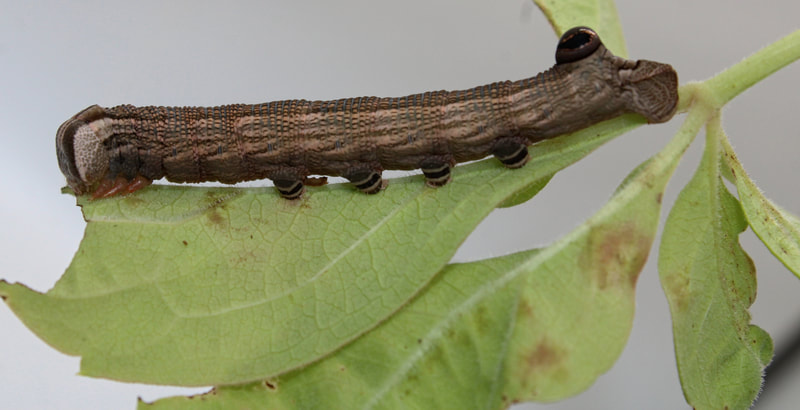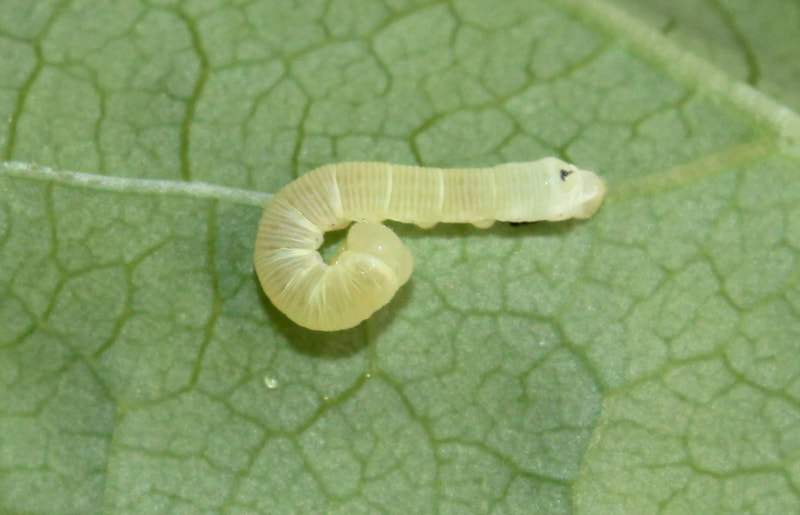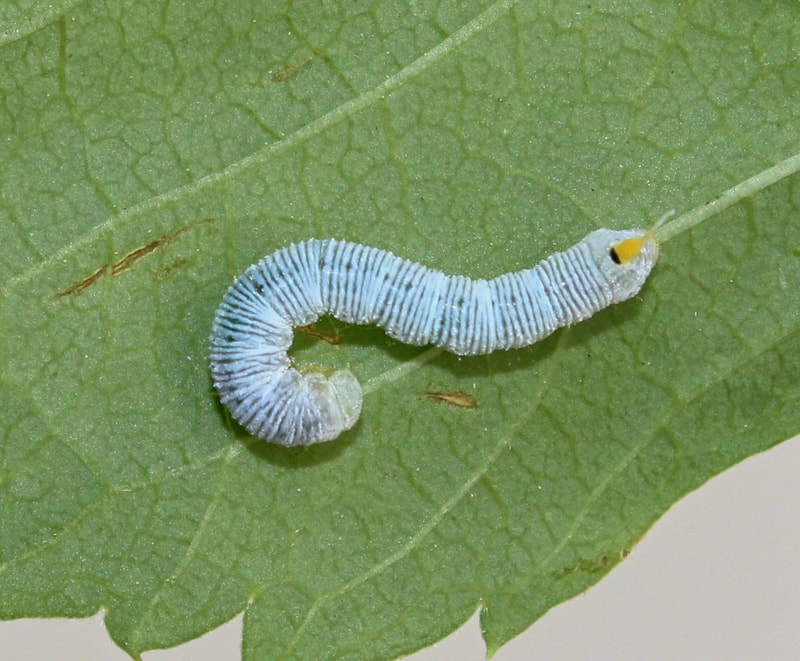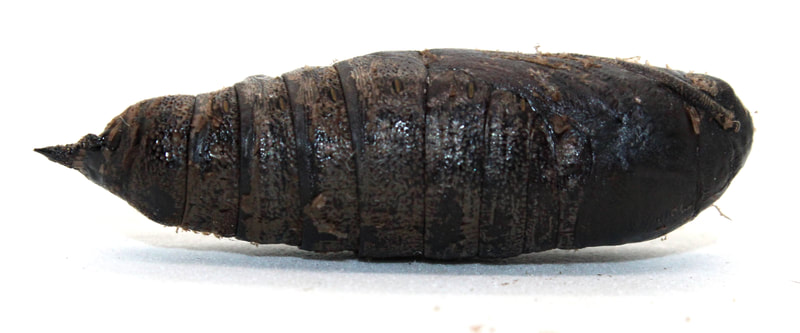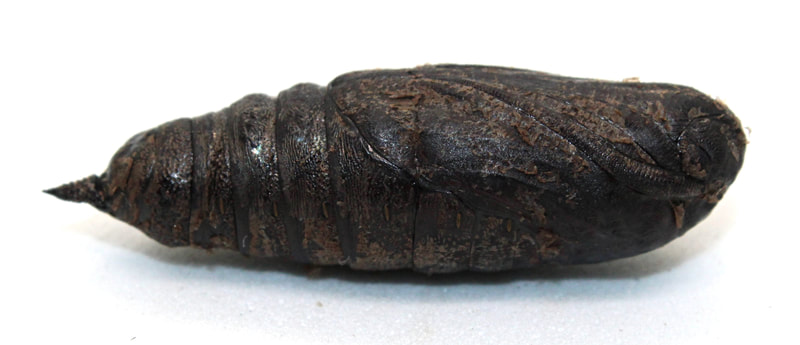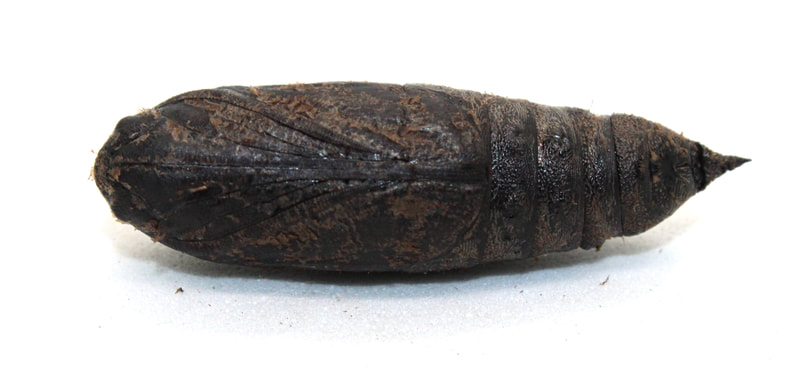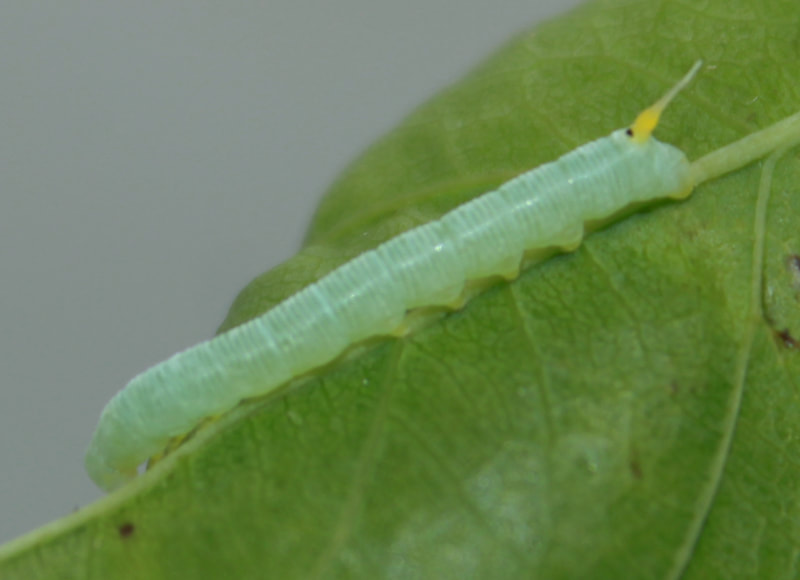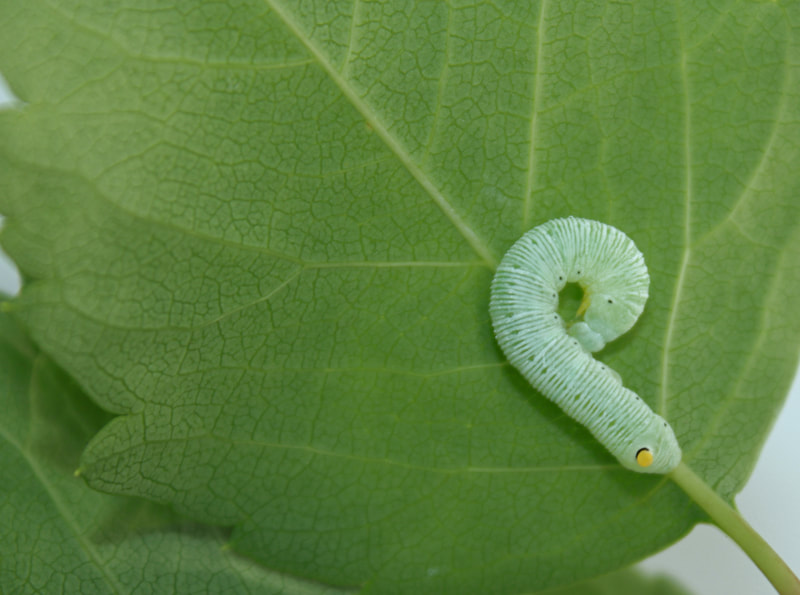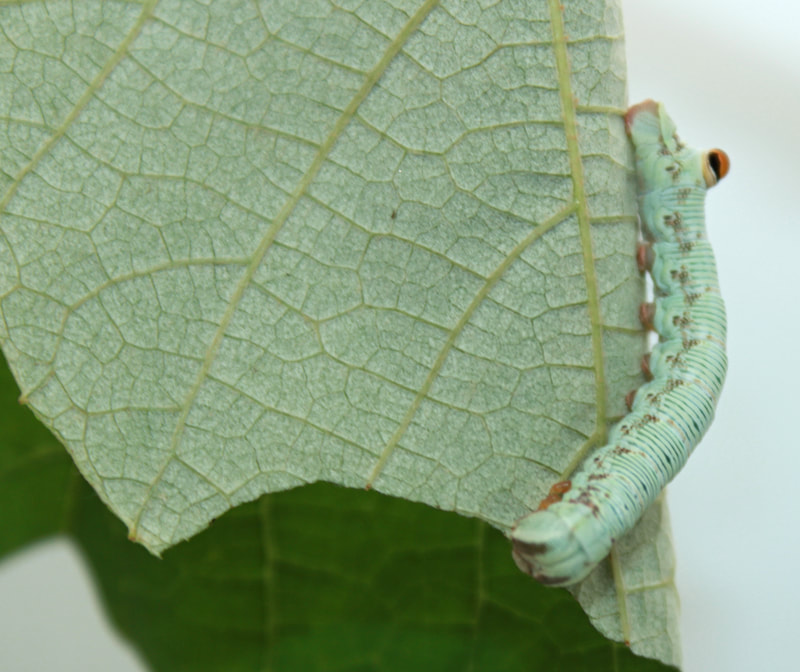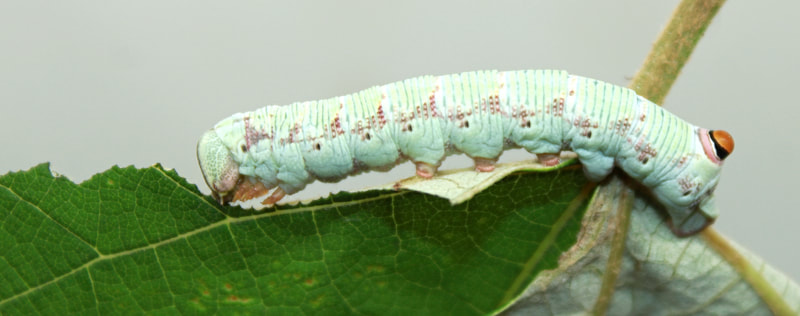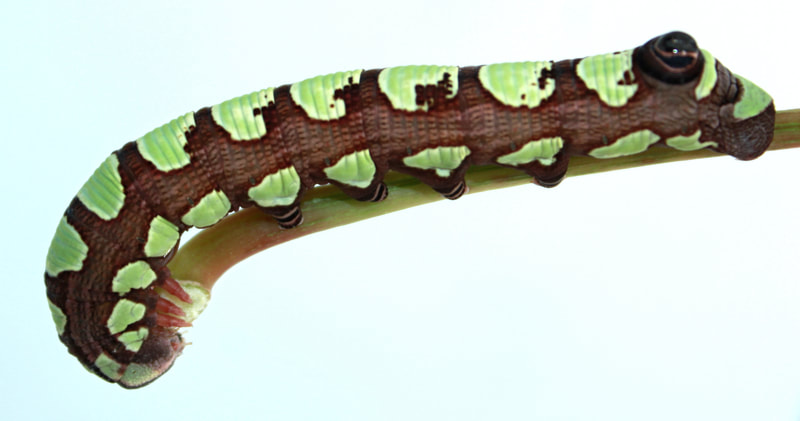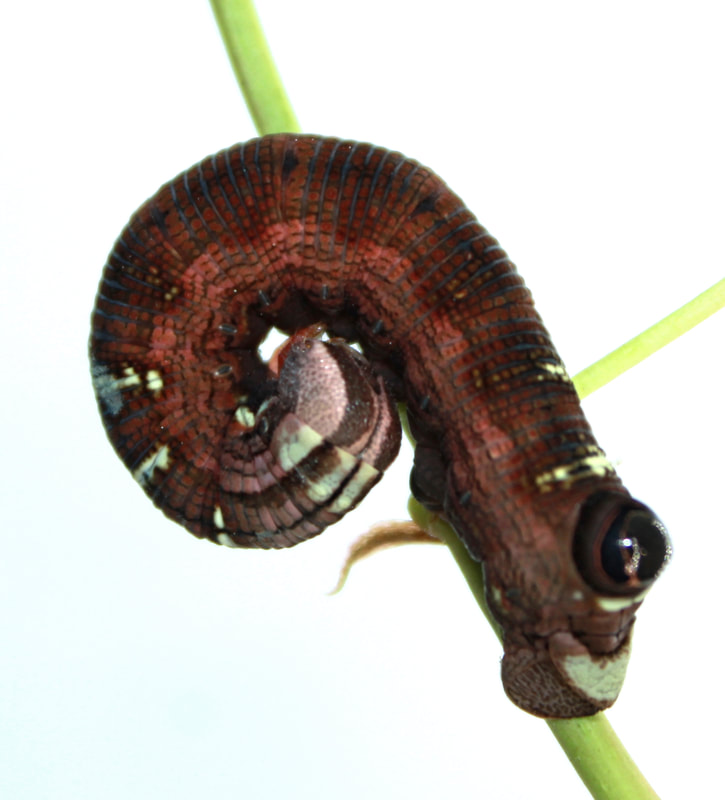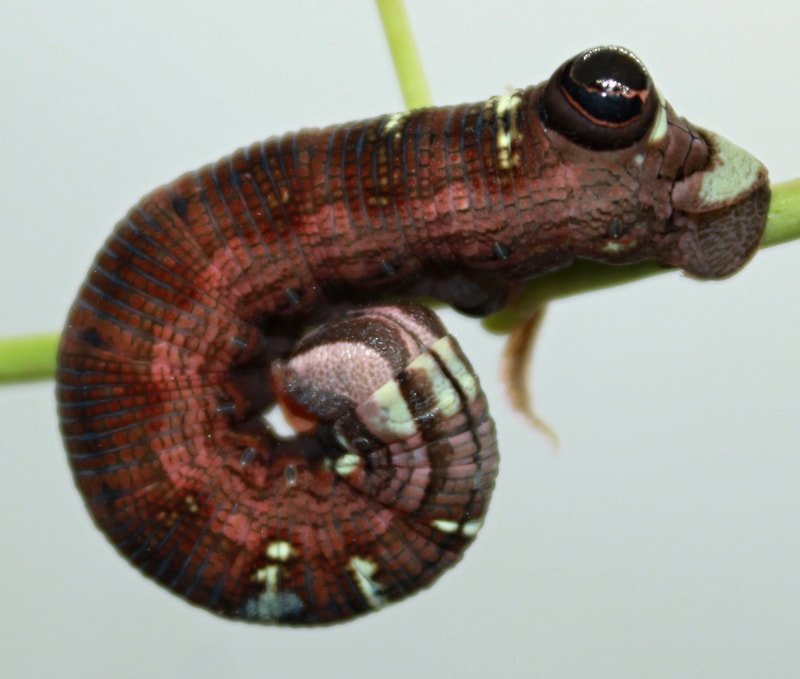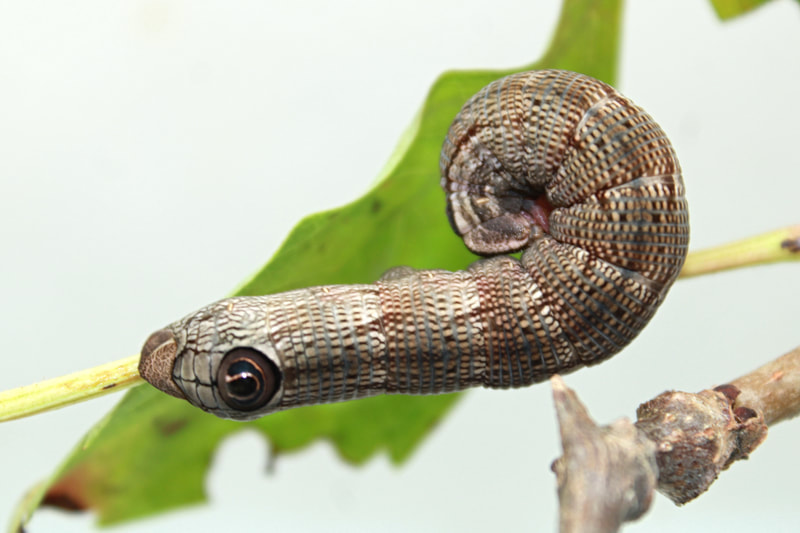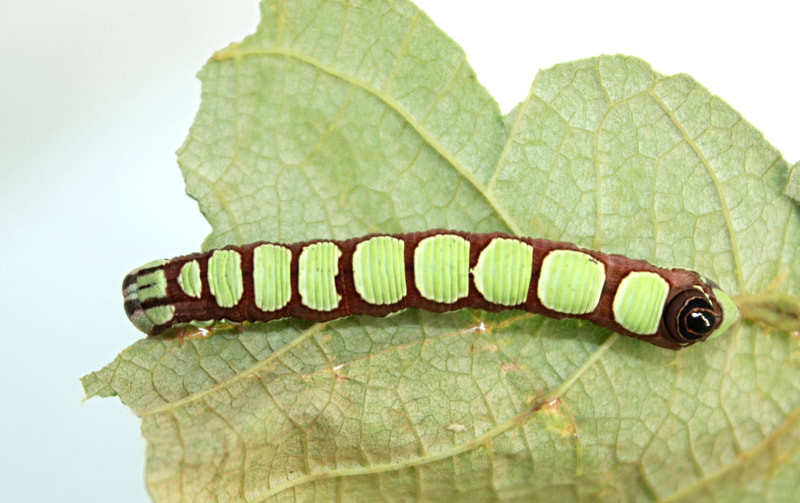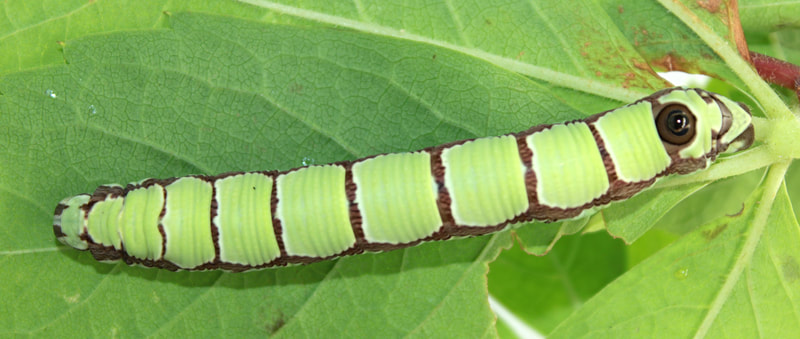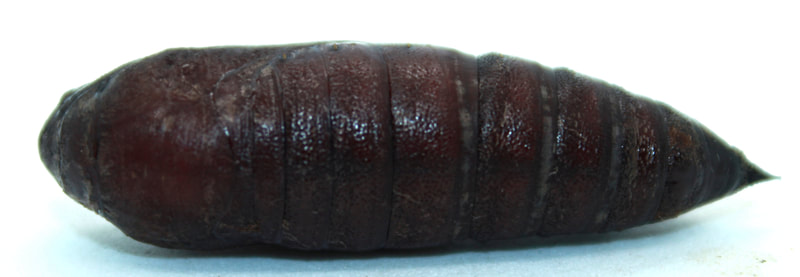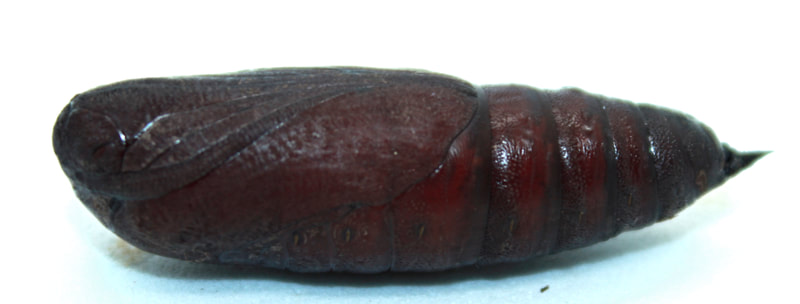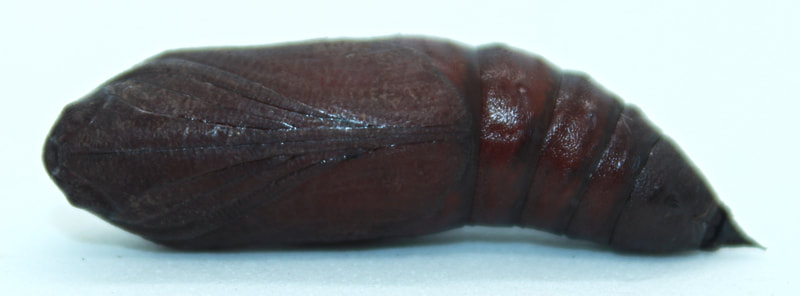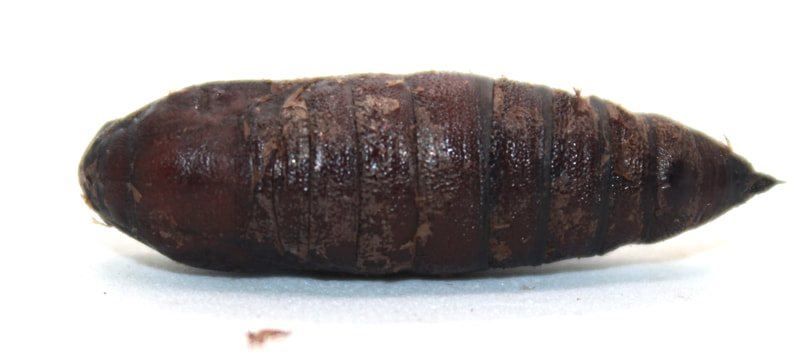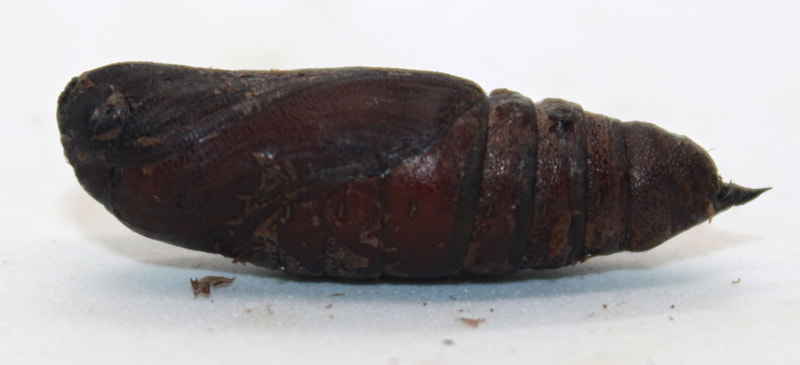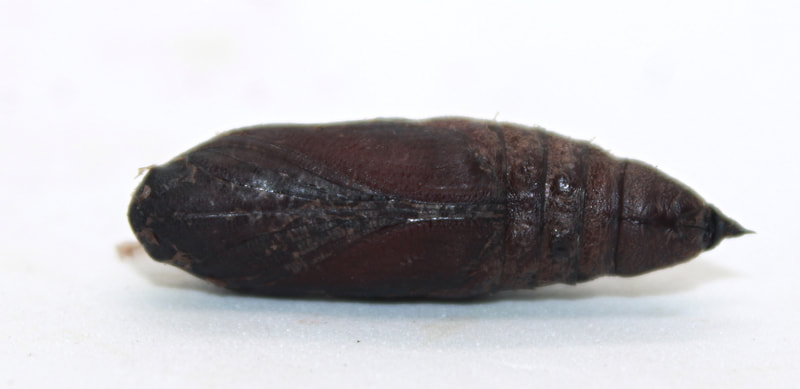|
Common Name(s): Abbott’s Sphinx
Ecology and Life History: This moth flies from May to July in the Northeastern USA. In the South, it can be found as early as March. This species is highly attracted to light, with both sexes coming to it with regularity. Males are more common at light than females. This species is not sexually dimorphic with males and females having the same markings. Females are slightly larger, rounder, and rest with their abdomens flat. Males rest with the tip of their abdomen upturned. Eggs are laid singly on the surfaces of leaves. Larvae feed singly. First instar larvae chew small holes from the underside of their hostplant leaves. They rest on the undersides of leaves near their chew-holes. Older larvae rest on the bark of their host, or nearby on trees, fences, or other objects. Final instar larvae have two forms, a green, grape-mimic form and a brown, bark-mimic form. Habitat and Searching for Larvae: This species feeds on Vitaceous vines with Vitis and Parthenocissus quinquefolia being favorites. This species is usually never out of reach. They tend to prefer vines sprawling over trees, fences, or other objects. If a bit of the vine extends outward, away from the object and is not surrounded by anything, that is a good place to start searching. Larvae like to hide underneath leaves, particularly as younger instars. This species inhabits fields, forest edges, parks, yards, wetlands, and other areas where its hostplants are prevalent. It can be incredibly common in parks and yards in the right areas. Larvae can be found from June to September in the Northeast, and from May to November farther south. UV light is a great method to find this larva at night as they fluoresce brightly. The brown form final instar doesn’t fluoresce as brightly, but it is noticeable under a UV light. Rearing Notes: Obtaining eggs from this species is difficult. It is likely that a flight cage with ample hostplant is needed. Placing a female in a paper bag did not yield any eggs. This species does quite well on most Vitaceous vines. Vitis and Parthenocissus quinquefolia have been used in the lab with great success. It is likely they will also consume Ampelopsis. This species is not prone to disease in captivity. They are easy to rear, especially in low-quantity in tupperware. Larger quantities of larvae can be housed together, but adequate ventilation must be provided. In a sleeve, many larvae can be reared together without problems. Final instar larvae should be removed to pupate. Pupation can be achieved by using the paper towel method (outlined in the general information tab) or by providing loose soil media to bury into. Host plants: Click here to load this Caspio Cloud Database
Cloud Database by Caspio |
Adult description:
This is an incredibly beautiful and distinctive moth. It is medium sized, forewings 27-31mm in length (1). The forewings are brown and resemble bark, the edges of the forewing are deeply scalloped. The thorax color is gray, and the antennae are bright yellow. The hindwings are yellow, with a black basal edge. The edges of the hindwing are also scalloped. Larval description: L5: The larva is just as beautiful and distinctive as the adult moth. There are two main forms, a brown, grape bark mimic form and a brown green splotched form. The green splotched form resembles a bunch of grapes. The horn is absent in the final instar and resembles an eyespot. |
The gallery to the left contains photos of Sphecodina abbottii adults. If you have a photo that you would like to submit to us, please contact us.
The gallery to the right contains photos of Sphecodina abbottii larval and pupal stages. If you have a photo that you would like to submit to us, please contact us.
The gallery to the right contains photos of Sphecodina abbottii larval and pupal stages. If you have a photo that you would like to submit to us, please contact us.
|
|
